What is skin chemical peel?
Skin chemical peel is a procedure in which a chemical solution is applied to the skin to remove the top layers. The skin that grows back is smoother. With a light or medium peel, you may need to undergo the procedure more than once to get the desired results.
Depending on the issues you’re addressing with the procedure, you’ll choose a chemical peel in one of three depths:
- Light chemical peel. A light (superficial) chemical peel removes the outer layer of skin (epidermis). It’s used to treat fine wrinkles, acne, uneven skin tone and dryness. You might have a light peel every two to five weeks.
- Medium chemical peel. A medium chemical peel removes skin cells from the epidermis and from portions of the upper part of your middle layer of skin (dermis). It’s used to treat wrinkles, acne scars and uneven skin tone. You might need to repeat the procedure to achieve or maintain the desired result.
- Deep chemical peel. A deep chemical peel removes skin cells even deeper. Your doctor might recommend one for deeper wrinkles, scars or precancerous growths. You won’t need repeat procedures to get the full effect.
skin chemical peel
Who Is a Good Candidate For a Skin Chemical Peel?
Generally, fair-skinned and light-haired patients are better candidates for chemical peels. Skin sags, bulges, and more severe wrinkles do not respond well to chemical peels. They may need other kinds of cosmetic surgical procedures, such as laser resurfacing, a facelift, brow lift, eyelid lift, or soft tissue filler (collagen or fat). A dermatologic surgeon can help determine the most appropriate type of treatment for you.
What products or procedures should I avoid before a peel?
• One week before the peel avoid waxing, electrolysis, deploritory creams, and laser hair removal.
• Two to three days before the peel discontinue using any prescription topicals such as Retin-A, differin or Tazorac, as well as any products containing retinol, alpha hydroxyl acids (AHA), beta hydroxyl acids (BHA) or benzoyl peroxide.
• Patients who have had any medical cosmetic facial treatments or procedures such as Laser treatments, cosmetic fillers or other surgical procedures should wait until skin sensitivity has completely resolved before receiving a peel.
skin peel.
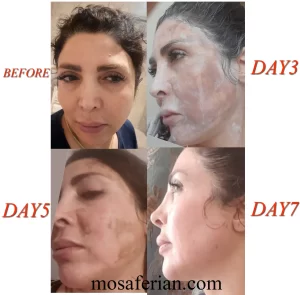
Is skin chemical peel safe?
A chemical peel can cause various side effects, including:
- Redness, scabbing and swelling. Normal healing from a chemical peel involves redness of the treated skin. After a medium or deep chemical peel, redness might last for a few months.
- Scarring. Rarely, a chemical peel can cause scarring — typically on the lower part of the face. Antibiotics and steroid medications can be used to soften the appearance of these scars.
- Changes in skin color. A chemical peel can cause treated skin to become darker than normal (hyperpigmentation) or lighter than normal (hypopigmentation). Hyperpigmentation is more common after superficial peels, while hypopigmentation is more common after a deep peel. These problems are more common in people with brown or black skin and can sometimes be permanent.
- Infection. A chemical peel can lead to a bacterial, fungal or viral infection, such as a flare-up of the herpes virus — the virus that causes cold sores.
- Heart, kidney or liver damage. A deep chemical peel uses carbolic acid (phenol), which can damage heart muscle and cause the heart to beat irregularly. Phenol can also harm the kidneys and liver. To limit exposure to phenol, a deep chemical peel is done a portion at a time, in 10- to 20-minute intervals.
- chemical peel
How long does peeling take to heal?
Recovery times will vary based on the type and strength of the peel. Immediately after the peel, your skin will feel tight and may be red. Any visible peeling will be light and fluffy and easily controlled with moisturizer. Peeling usually lasts 3-5 days, depending on the actual peel treatment. Use of gentle cleanser, moisturizer and sunscreen is important, as it will enhance the healing process and results.
Who should not get skin peel?
Chemical peels should be avoided if any of the following conditions are present:
• Active cold sores, herpes simplex or warts in the area to be treated
• Wounded, sunburned or excessively sensitive skin
• Accutane use within the 6 months
• History of recent chemotherapy or radiation therapy
• Allergies to aspirin
• Women who are pregnant or actively breastfeeding
• Patients with a history of autoimmune disease (such as rheumatoid arthritis,vitiligo, psoriasis, lupus, multiple sclerosis etc) or any condition that may weaken their immune system.
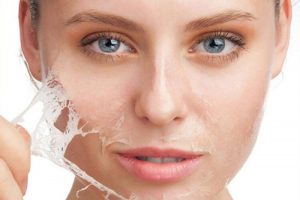
Is chemical peel painful?
Procedures may vary dependent on the type of chemical peel chosen. Skin is prepped using a medical degreaser to ensure the treated area is free of any oils left on the skin. The chemical agent is then applied and typically remains on the skin for 3 to 5 minutes. Most patients feel a mild stinging which is temporary and usually subsides after a few minutes. Some peels are designed to self neutralize and may remain on your skin for 2-4 hours.
How long does hyperpigmentation last after chemical peel?
Depending upon the type of chemical peel, a reaction similar to sunburn occurs following the procedure. Peeling usually involves redness followed by scaling that ends within three to seven days. Mild peels may be repeated at one to four-week intervals until you get the look you’re after.
Medium-depth and deep peeling may result in swelling as well as blisters that may break, crust, turn brown, and peel off over a period of seven to 14 days. Medium-depth peels may be repeated in six to 12 months, if necessary.
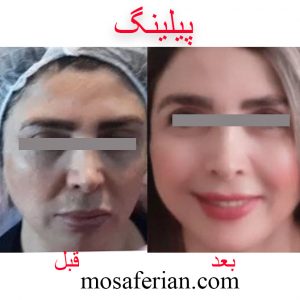
How do I care for my skin after the peel?
Use of a soap free gentle cleanser shall be used to wash your face, scrubs and wash cloths should be avoided while skin is peeling. Application of a hydrating moisturizer twice a day or as often as necessary is recommended to relieve dryness and control peeling. TNS ceramide cream, Elta intense moisturizer or Neocutis bio cream are all highly suggested. A physical Sunblock must be worn daily. Its best to avoid prolonged sun exposure for 1-week post peel.
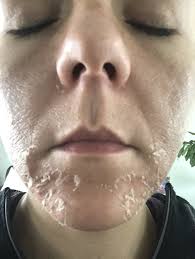

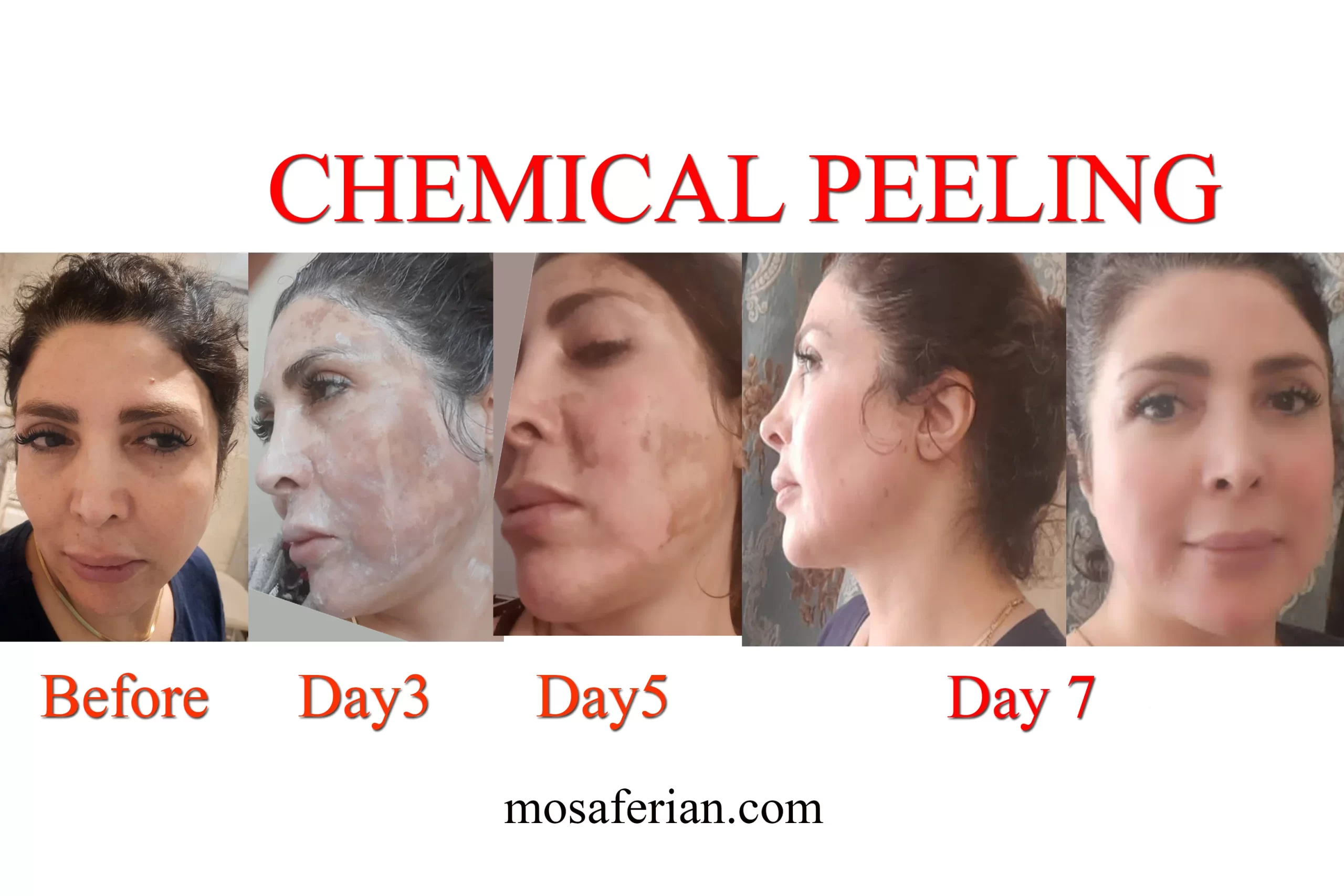
Leave a Reply